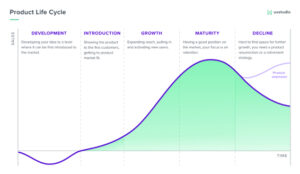Introduction
As a group of researchers at UX studio we tend to seek new methods and ideas that we can share with each other and use to improve our work. This year we’ve made this study method more formal and organized 3-month-long workgroups. We set up topics of interest for each workgroup and 4-5 people joined each – focusing on the same area.
Our group set a goal to learn more about features and user needs prioritization. We asked one main question: how might we learn more about new and exciting feature prioritization methods in a structured way? We’ve read amazing articles describing and categorizing these techniques. At some point we realized that none of them show how to pick techniques based on the current stage of your product. How can one decide which feature prioritization method to use depending on the current stage of a product life cycle?
Why does feature prioritization matter?
At the end of the day the ultimate goal of product development is to decide what features to spend time on, in what order – and what to exile to the uncharted shores of the backlog. During product development, you have constant forces that push or pull you and feature candidates in opposite directions. For example:
- New feature ideas from the team
- What competitors have
- Speed to market
- Engineering resources
- User perceptionInvestor interests
- Business valueand so on…
Let’s be honest, it is really challenging for a product manager to decide and find the right mix of features to push through design and development. Especially in early phases of the development, where resources are scarce. That’s when prioritization techniques come to help and provide a sharp machete to cut through this dense jungle.
Even though you’ll never be able to do a perfect job – the final verdict will come from your users after release – you can help the team minimize the risk of assumption-based decision making by spending more time with proper feature prioritization (and research).
Stages of the product life cycle

Development
All products start with an idea or two. You want to check if those ideas are feasible, do the necessary discovery research to find signals and validate your assumptions without risking too much. We assume you’ve done discovery research, and the road to developing the MVP has just begun. You may want to focus on expected, vital features, as well as features that might be more important to your investors if you’re not bootstrapping.
Growth
Okay, so you successfully launched your product, and the growth stage comes into play. You want to focus on pulling in and activating as many new users as you can. As the demand for the product starts to increase, you may want to work on establishing the product’s position on the market.
With the increase of sales and with the improved profit margins of this stage you have the chance to invest further in the product. Now it is time to focus on product improvement and handling the competition – while adding features that ensure the constantly increasing number of new users.
Conclusion
Product Owners have an enormous collection of feature prioritization methods, but sometimes it’s hard to pick the one to use in the right situation.





